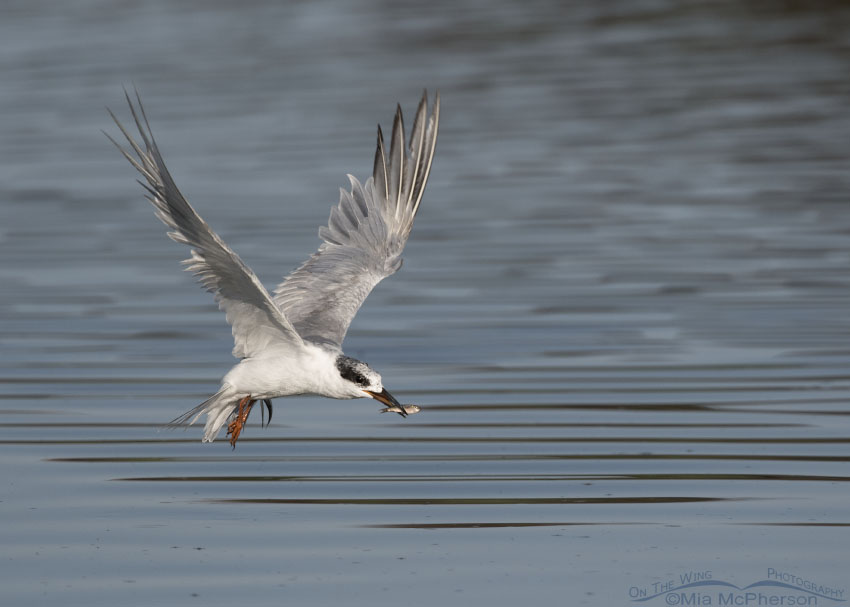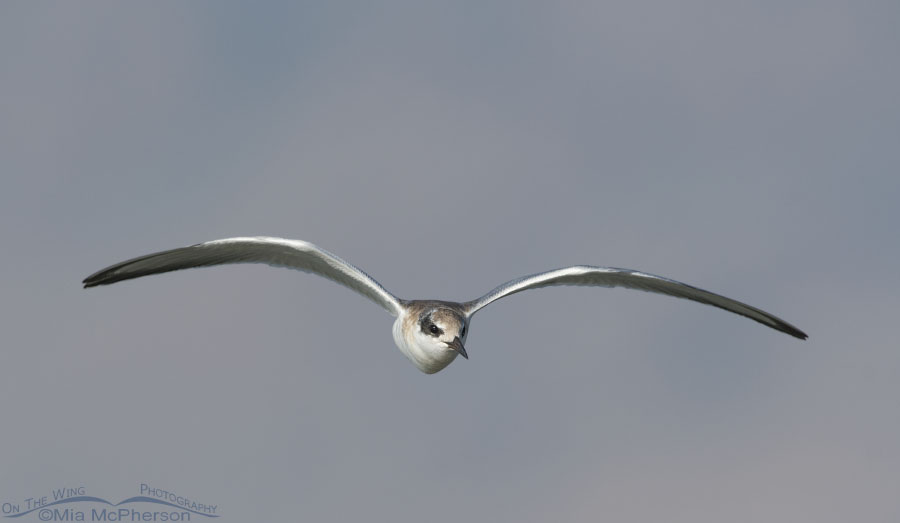 Nonbreeding adult Forster’s Tern in flight with prey – Nikon D500, f6.3, 1/4000, ISO 400, -0.3 EV, Nikkor 500mm VR with 1.4x TC, natural light, not baited
Nonbreeding adult Forster’s Tern in flight with prey – Nikon D500, f6.3, 1/4000, ISO 400, -0.3 EV, Nikkor 500mm VR with 1.4x TC, natural light, not baited
At the end of last month I had fun photographing Forster’s Terns at Bear River Migratory Bird Refuge in northern Utah. Forster’s Terns breed in the marshy areas surrounding the Great Salt Lake and I have even seen them on their nests at the refuge some years. Forster’s Terns are migratory although it is the only tern found in North America throughout the entire year.
Right now these terns at the refuge are busy feeding their young although some of the juvenile Forster’s Terns have already learned how to capture prey on their own. There are plenty of small fish for them to dive for and catch at the refuge and it is amazing to see the adults and juveniles hovering over the water and to watch them splash down and come up with prey.
The adult pictured above has gone into its nonbreeding plumage, its black cap would be solid black during the breeding season and its bill would be bright orange near the base and have a black tip. Its tiny feet would also be a brighter orange than shown in this photo.
 Juvenile Forster’s Tern in flight – Nikon D500, f7.1, 1/2000, ISO 400, Nikkor 500mm VR with 1.4x TC, natural light, not baited
Juvenile Forster’s Tern in flight – Nikon D500, f7.1, 1/2000, ISO 400, Nikkor 500mm VR with 1.4x TC, natural light, not baited
The juvenile Forster’s Terns have some gingery brown plumage mixed in with their grey, black and white feathers and their dark masks aren’t quite as dark as the masks of the adults. Some of the young terns at Bear River MBR are still begging the adults to feed them and they can make quite a racket.
It won’t be long before our Forster’s Terns migrate to the Pacific, Atlantic and Gulf coasts to spend the winter. Hopefully I will be able to spend more time photographing these lovely terns and their young before they do.
Life is good.
Mia
Click here to see more of my Forster’s Tern photos plus facts and information about this species.


The image of the tern holding its prey over the seemingly linear water is almost surreal. Beautiful shot Mia. Thx.
I never tire of admiring the miracle of flight…
Thanks Mia for the photos and especially the Forester’s Tern migration information. Over the years I’ve enjoyed photographing these industrious little fishermen all around San Francisco Bay as I think about their arduous migration.
Thank you for your recent Forsters postings. I was able to see these birds recently at Jamaica Bay NWR, NY with a Bedford NY Audubon outing led by Tait Johannsen. Your photos and narratives have brought that experience all together, and I’ll be able to identify these terns on my own in the future.